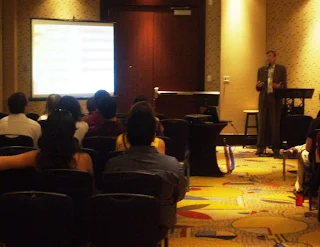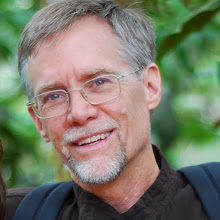Within this context, Sophists were the masters of persuasive technique and rhetorical argument. From their efforts in both philosophy and politics arose a method of formal logic based on oppositional models for the generation of knowledge, first systematized and published by Aristotle. All-male academies were established where these methods were taught and used as essential tools of intellectual work. Here, young men were trained to become the builders of the Greek Empire`s political, economic and military systems, thereby reproducing and strengthening the foundations of a culture of contest, dispute and adversarialism from one generation to the next.
This is the culture that was eventually handed down to Christian Europe through the Roman civilization, whose ascendancy was also based on political, economic and military power. When the Roman Empire weakened, Southern Europe was invaded and plundered by the Goths, Visigoths and other barbaric tribes of Northern Europe that had not been vanquished by the Romans. All of this provided abundant historical material to produce the adversarial worldview that became the predominant influence in most aspects of Western society and culture.
Medieval Europe’s educational approach was modeled after the Greek academies, first in the all-male monasteries, then in the “cathedral schools” from the 9th century AD, next in the ecclesiastic schools from the 12th century AD, and finally in secular schools strategically sponsored by aristocrats from the 17th century AD on. Karlberg [2004:58-62] provides an excellent summary of authors such as Noble [1992], Moulton [1983] and Ong [1974, 1981], who studied these successive institutions in depth and found them to be highly adversarial in many ways through the late 19th century.
These authors describe them as masculine, even misogynistic schools, where women were perceived as worldly and sinful, to be avoided in order to preserve the purity of both body and soul. They had a highly militaristic culture, with rigid discipline and war-like regimes. Students saw themselves as ‘warriors’ in training to fight battles, both spiritual (as missionaries) and physical (crusades and inquisitions). In some universities, classes were divided into ‘nations’ and fought ritualized armed battles between them. Sometimes these ‘soldiers’ went out into the neighboring communities at night to terrorize the local population, especially the women. There was a ritual enmity between professors and students, adversarial methods of teaching and evaluation, and frequent physical punishments. The primary teaching and research methods consisted of academic disputes and intellectual contests, such that those subjects that were best suited to this approach were favored over others.
For almost 2000 years, these breeding grounds of adversarialism trained each successive generation of leaders who wrote ‘world history’, designed the institutions and practices that became today’s adversarial social structures, and developed the diverse scientific disciplines of the West, all of which coincided in portraying the world through the dark glasses of adversarialism. Even today, the predominant epistemological model in the West is one that perceives the generation of knowledge as a contest between competing ideas.
Beginning in the 15th century, the European conquest and colonization of most of the world made it possible for this culture of contest to become firmly implanted in all of the colonies, not only in the form of structures of governance, but also in educational systems. During this time, the theoretical underpinnings of adversarial thought were strengthened through the notions we studied in Units 3 and 4. Even after their liberation from colonist rule, in their process of ‘modernization’, virtually all newly independent nation-states have chosen to style their social structures –including educational ones– after adversarial Western models. This is how the culture of contest was promoted and reproduced throughout the world and became the predominant model for many educational institutions, especially colleges and universities.
In promoting a culture of peace in the world, one essential starting place is to transform educational structures from breeding grounds of adversarialism to seedbeds of mutualism. Not only should students explore mutualistic contents using independent investigation of truth, but educational methods should be based on approaches such as consultation. In doing so, we should be careful not to let the culture of adversarialism taint our understanding of the mutualistic principles on which these approaches are based. Take the quote “The shining spark of truth cometh forth only after the clash of differing opinions,” for example. We need to avoid the tendency to see such concepts through filters inherited from the culture of contest, according to which this “clash” would refer to a collision of personalities instead of an encounter of ideas, or to dialectical dynamics of opposition instead of dialogical relations of complementarity.
 This difference can be illustrated using an analogy from the natural sciences. According to Newtonian physics, when atoms bumped against each other, the influence of those with the greatest mass and momentum prevailed over the others, much like what happens in an adversarial debate. However, in today’s accelerators, when subatomic particles collide (see image), the sum of their collective mass, energy and momentum produces a burst of new particles that are quite different from the original ones –some stable and enduring and others unstable and fleeting– which reflects the creative power of bringing together a diversity of ideas through consultation.
This difference can be illustrated using an analogy from the natural sciences. According to Newtonian physics, when atoms bumped against each other, the influence of those with the greatest mass and momentum prevailed over the others, much like what happens in an adversarial debate. However, in today’s accelerators, when subatomic particles collide (see image), the sum of their collective mass, energy and momentum produces a burst of new particles that are quite different from the original ones –some stable and enduring and others unstable and fleeting– which reflects the creative power of bringing together a diversity of ideas through consultation.Building a new paradigm of mutualistic education will take profound transformations, not only in educational practices and institutions as such, but also in each individual educator.
References:
Karlberg, Michael: “Beyond the Culture of Contest – From Adversarialism to Mutualism in an Age of Interdependence”. Oxford: George Ronald Publisher, 2004.
Moulton, Janice. ‘A Paradigm of Philosophy: The Adversary Method’, in Sandra Hardin and Merril Hintikka (eds.), Discovering Reality: Feminist Perspectives on Epistemology, Metaphysics, Methodology, and Philosophy of Science, Boston: Kluwer Boston, 1983.
Noble, David. A World without Women: The Clerical Christian Culture of Western Science, Oxford: Oxford University Press, 1992.
Ong, Walter J. ‘Agonistic Structures in Academia: Past to Present’, Interchange: Journal of Education, Vol. 5 (1974), pp. 1-12.
Ong, Walter J. “Fighting for Life – Contest, Sexuality and Consciousness”. Ithaca, NY: Cornell University Press, 1981.


No comments:
Post a Comment